Childhood diseases like diphtheria, tetanus and a host of others claimed innumerable before these were prevented by vaccination. Though incidents of infection and the consequent death tolls have dropped, the threat is far from dead. Vaccine-preventable diseases continue to pester children who aren’t insulated by immunization and the records come up with alarming numbers. For more information here’s everything you might want to know about vaccination.
In the year 2013, there were cases of around 218400 deaths. However, armed with antibodies received from its mother a newborn is unsusceptible to most of the childhood diseases. As the child steps in his first year, his/her immunity drops. At this point, it needs vaccination against specific diseases that can be fatal.
10 – Childhood diseases that can be prevented by vaccination
Below is the list of vaccine-preventable diseases which every parent need to be aware of to prevent their onslaughts on children.
1. Vaccicella (Chicken pox):
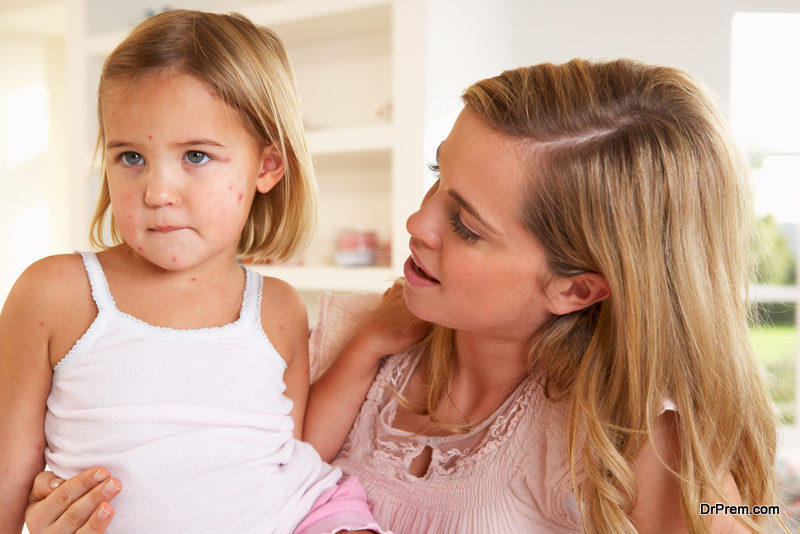 One of the common diseases in children, chicken pox results in fever and fatigue followed by rashes which cause an intense itching sensation. Consequences can be severe ranging from an injured immunity system, brain damage, pneumonia or even demise.
One of the common diseases in children, chicken pox results in fever and fatigue followed by rashes which cause an intense itching sensation. Consequences can be severe ranging from an injured immunity system, brain damage, pneumonia or even demise.
It can be prevented by vaccination if the initiative is taken at a very early age of your baby. Dosages prescribed should be from 12 through 15 months and again from 4 through 6 years.
2. Pertussis (whooping cough):
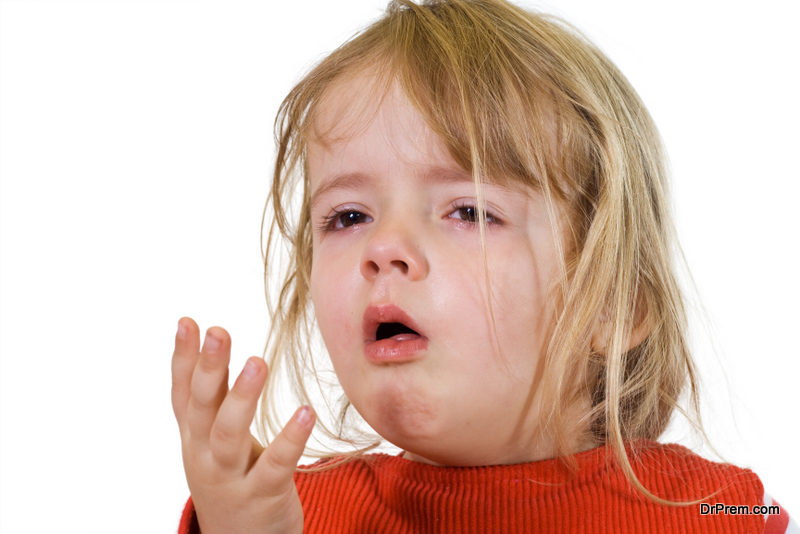 This is one of the serious childhood diseases and can have a harmful impact on the brain. The disease is highly transmissible and could be life-threatening for kids below 6 years of age. Symptoms are spasms of violent cough disabling the patient to eat, drink or even breathe.
This is one of the serious childhood diseases and can have a harmful impact on the brain. The disease is highly transmissible and could be life-threatening for kids below 6 years of age. Symptoms are spasms of violent cough disabling the patient to eat, drink or even breathe.
Duration of this disease can span over a week resulting in pneumonia, seizures, severe impairment to the brain or even death. In the majority of cases, immediate hospitalization is imperative. Vaccination should start at the age of 2 and is to be completed by 6 years. The germ of whooping cough breeds in the throat, mouth and nose and propagated by coughs and sneezes.
3. Diphtheria:
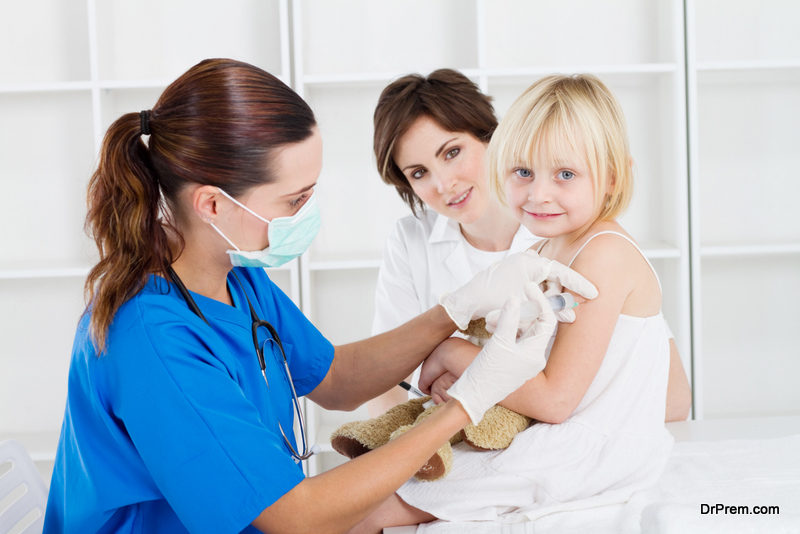 This is ranked as one of the most dreadful childhood diseases forming a slimy coat at the back of the nose and throat making it very painful for the child to breathe. A vaccine called D Tap provides the kid with the required insulation against diphtheria. Diphtheria, against the popular notion of being extinct is still very much in existence.
This is ranked as one of the most dreadful childhood diseases forming a slimy coat at the back of the nose and throat making it very painful for the child to breathe. A vaccine called D Tap provides the kid with the required insulation against diphtheria. Diphtheria, against the popular notion of being extinct is still very much in existence.
This disease can spell havoc with the child leading to paralysis, cardiac arrest and eventual dead if vaccination measures are not initiated in time. A recommended dose of 5 vaccines is a must with a single dose each at 2, 4, 6, 15 and 18 months. Again a repeat dose at 4 through 6 years is compulsory.
4. Rotavirus:
 This is one of the highly infectious childhood diseases, which is accompanied by severe diarrhea with the manifestation of throwing up, abdominal ache and high fever. Acute dehydration could be a fall out resulting in the need for prompt hospitalization. It is the first vaccination for your kid to keep it immune against rotavirus.
This is one of the highly infectious childhood diseases, which is accompanied by severe diarrhea with the manifestation of throwing up, abdominal ache and high fever. Acute dehydration could be a fall out resulting in the need for prompt hospitalization. It is the first vaccination for your kid to keep it immune against rotavirus.
Medical recommendations point towards 2 or 3 doses of vaccines depending upon the brand. Irrespective of the brand, the first dose is to be administered at 2 months and the second one at 4 months. Depending on the Rota Tech vaccine, a third dose may be required at 6 months. In absence of vaccination, rotavirus has the potential to kill the child.
5. Mumps:
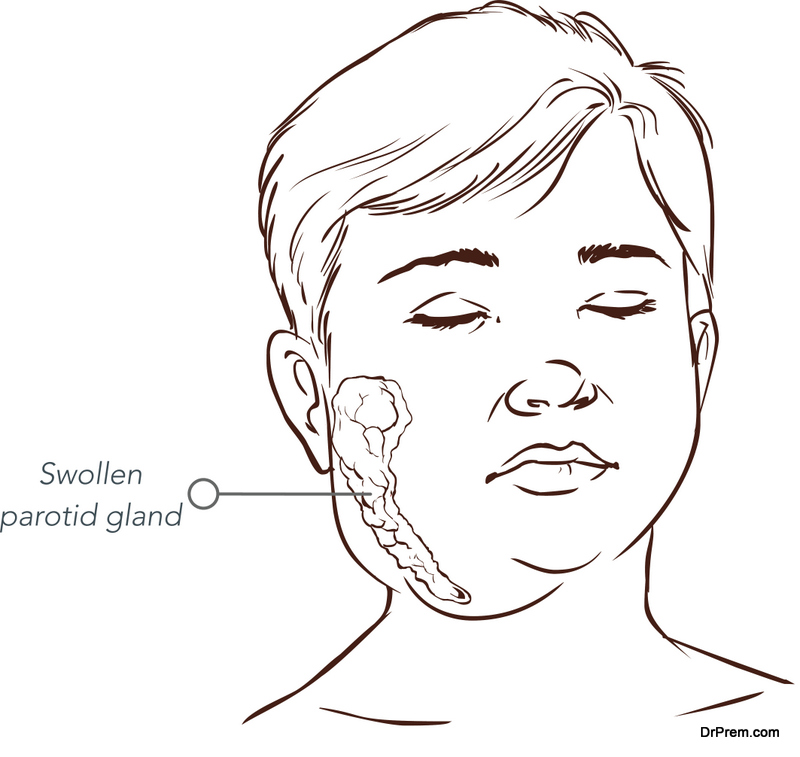 Children affected by mumps get bloated cheeks and swollen jaws caused by the inflammation of the salivary glands. Severe fever, fatigue, aching muscles and headaches are the typical symptoms. If left untreated, mumps can spread fast taking the shape of an epidemic.
Children affected by mumps get bloated cheeks and swollen jaws caused by the inflammation of the salivary glands. Severe fever, fatigue, aching muscles and headaches are the typical symptoms. If left untreated, mumps can spread fast taking the shape of an epidemic.
Even after so many years of its immunization procedures came to be known, mumps still exists and long and close contact with infected people can favor its propagation.
MMR vaccine is advised by doctors and the child must get two shots of the vaccine ensuring protection. A single dose to be administered at each of the following ages: 12 through 15 months and 4 through 6 years.
6. Rubella:
 This is one of the most harmful diseases in children that is spread through sneezes and coughs. Particularly threatening for pregnant women, it is also harmful to fetal development. Unvaccinated pregnant mother affected by Rubella may have a chance of ending up in miscarriage. The child requires two doses of MMR vaccines to ensure the best security. Give one dose each at 12 -15 months and 4 through 6 years.
This is one of the most harmful diseases in children that is spread through sneezes and coughs. Particularly threatening for pregnant women, it is also harmful to fetal development. Unvaccinated pregnant mother affected by Rubella may have a chance of ending up in miscarriage. The child requires two doses of MMR vaccines to ensure the best security. Give one dose each at 12 -15 months and 4 through 6 years.
7. Tetanus:
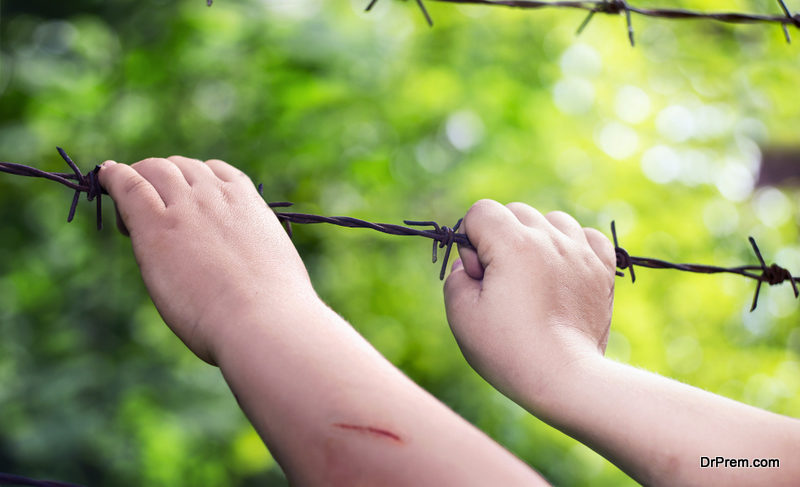 Tetanus is also one of the most life-threatening childhood diseases leading to muscle stiffening and lockjaw. It can lead to death. The virus generally enters the bloodstream from wounds and cuts by metals.
Tetanus is also one of the most life-threatening childhood diseases leading to muscle stiffening and lockjaw. It can lead to death. The virus generally enters the bloodstream from wounds and cuts by metals.
Children are more susceptible to such wounds while playing. DTap vaccine shot is the best form of protection against tetanus. One dose is required each at the ages of 2, 4,6,15 and 18 months and again at 4 through 6years.
8. Poliomyelitis (Polio):
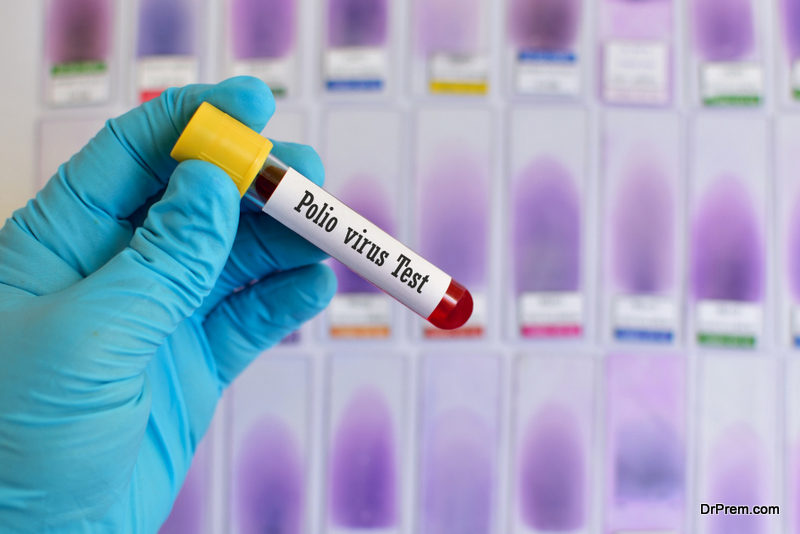 Polio can paralyze, cripple or even kill your child if he/she is not immunized. The disease is transmitted by contact with faces of an infected person. Syndromes are sore throat, body pain, muscle weakness and headaches. Immunization is a must at 2 years and usually, it is over before the kid starts going to school.
Polio can paralyze, cripple or even kill your child if he/she is not immunized. The disease is transmitted by contact with faces of an infected person. Syndromes are sore throat, body pain, muscle weakness and headaches. Immunization is a must at 2 years and usually, it is over before the kid starts going to school.
9. Hemophilic influenza, type B infection:
 It results in the most dreadful type of meningitis in children who aren’t properly immunized. It can lead to infection of the blood, joints, throat, heart covering and the skeletal structure. Children below 5 years are specifically vulnerable to the disease. HIB vaccines for 2 months or older can ensure protection. After the child reaches 5 years, vaccines against this disease are no longer needed.
It results in the most dreadful type of meningitis in children who aren’t properly immunized. It can lead to infection of the blood, joints, throat, heart covering and the skeletal structure. Children below 5 years are specifically vulnerable to the disease. HIB vaccines for 2 months or older can ensure protection. After the child reaches 5 years, vaccines against this disease are no longer needed.
10. Measles:
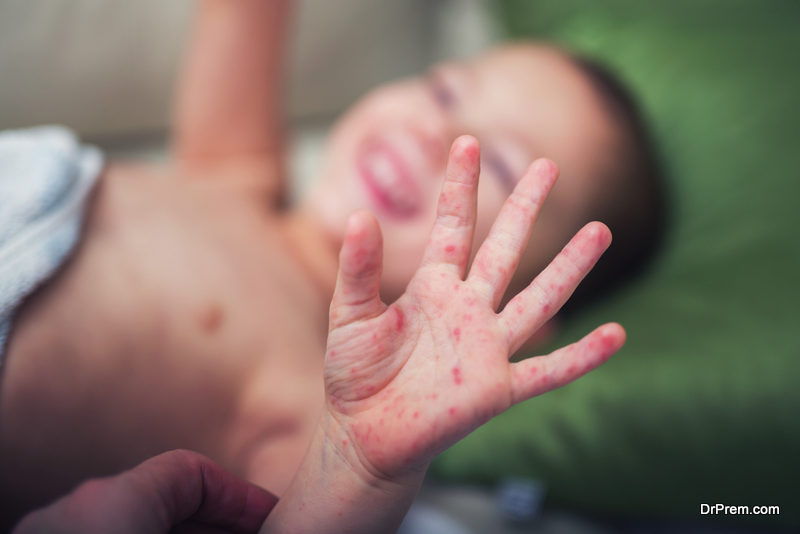 Your unvaccinated child can easily get infected with measles just by entering a room where a person infected with measles was present two hours before. Such is the level of contagiousness of this disease. Doctors recommend 2 doses of MMR shots for your child for the best level of protection.
Your unvaccinated child can easily get infected with measles just by entering a room where a person infected with measles was present two hours before. Such is the level of contagiousness of this disease. Doctors recommend 2 doses of MMR shots for your child for the best level of protection.
A single dose should be administered within the age of 12-15 months and another between 4-6 years. Infants 6-11 months old should have this vaccine if they are traveling abroad. They should be revaccinated on or after their first birthday with two doses within a gap of 28 days between the doses.




